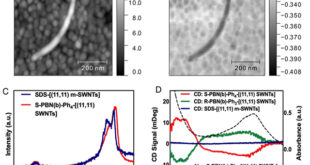Significance
Using light to control polymerization processes is a fascinating methodology as it offers high-level spatial and temporal control. Besides light being an abundant energy source, the precise control of polymerization reactions via photo-induced processes is of advantage. Among polymerization techniques that have been adapted to use light as energy source, reversible-addition fragmentation chain-transfer (RAFT) polymerization is a prominent method that has benefited from photo activation. While conveniently photo-active initiators can been employed to control RAFT processes via light, some intrinsic limitations remain in place.
Direct photo-activation of chain transfer agents (CTAs) has proved effective in addressing some of these issues. The activation of CTAs can be achieved using two principle strategies: photo-iniferter (PI)-RAFT and photo-electron/energy transfer (PET)–RAFT polymerization. PET-RAFT involved adding photocatalysts that transfer harvested light energy to the CTA. It can be performed at various wavelengths and can be oxygen tolerant. In contrast, PI-RAFT entails the direct activation of the CTAs via light, followed by homolytic dissociation of the R-S bond to liberate thiocarbonylthio radical and carbon-centered R-radical. Both methods display an increased livingness compared to conventional thermal activation. In addition, PI-RAFT does not require addition of a photo catalyst.
One key feature of PI-RAFT is the reversible deactivation and related increased chain end fidelity compared to conventional RAFT polymerization. This can be attributed to the persistent radical effect responsible for the suppression of the termination of carbon-based transient radicals. It is also speculated that this mechanism could achieve precise polymerization control. For instance, adequate deactivation by thiocarbonylthio radicals could lead to narrow molecular weight distributions even in the absence of efficient chain transfer. However, the role of reversible deactivation in this regards is still not clear.
Herein, Anne Lehnen, Jan Kurki and Dr. Matthias Hartlieb from the University of Potsdam investigated the role of reversible deactivation and its limits in PI-RAFT processes in comparison with conventional RAFT polymerization. In their approach, a combination of xanthate known for efficient photochemistry and acrylamide was utilized as a model system because the chain transfer coefficients of the resulting monomer-CTA pair were relatively low. As a result, it was suitable for enabling fast processing while providing comparably high dispersities of resulting polymers. The main objective was to investigate the impact of reversible deactivation on polymerization control but also to leverage the high livingness to achieve a straightforward synthesis of multiblock copolymers. Their work is currently published in the journal Polymer Chemistry.
The researchers carried out tests with varying targeted degrees of polymerizations and reported no significant improvement in the control of the polymerization process using PI-process. While PI-RAFT appeared slightly superior in achieving desirable molecular weight at high degrees of polymerization, the RAFT chain-transfer equilibrium was still responsible for determining the narrowness of the polymer distribution. However, polymerization control was achieved by slowly adding the monomer effectively increasing the number of activation/deactivation events per added monomer.
Importantly, the livingness of the polymerization was remarkably high, allowing the rapid and straightforward synthesis of multiblock copolymers. The authors synthesized polymer containing up to 20 blocks with high total molecular weight per block. For example, up to 20 blocks were produced at high precision by a repeating sequence of three acrylamides with a total of over 1500 repeating units.
In summary, the study probed the influence of reversible deactivation in PI-RAFT polymerization. A significant advantage of PI-RAFT is high livingness, depicted by the virtual absence of dead chains often associated with termination. Using xanthates as CTA, the method was rapid, simple and easy to use. In a statement to Advances in Engineering, Dr. Matthias Hartlieb who is an Emmy Noether Group Leader at the University of Potsdam and the corresponding author echoed the viability of PI-RAFT polymerization as a powerful method for synthesizing polymeric materials, especially segmented macromolecules.
Reference
Lehnen, A., Kurki, J., & Hartlieb, M. (2022). The difference between photo-iniferter and conventional RAFT polymerization: high livingness enables the straightforward synthesis of multiblock copolymers. Polymer Chemistry, 13(11), 1537-1546.
 Advances in Engineering Advances in Engineering features breaking research judged by Advances in Engineering advisory team to be of key importance in the Engineering field. Papers are selected from over 10,000 published each week from most peer reviewed journals.
Advances in Engineering Advances in Engineering features breaking research judged by Advances in Engineering advisory team to be of key importance in the Engineering field. Papers are selected from over 10,000 published each week from most peer reviewed journals.

